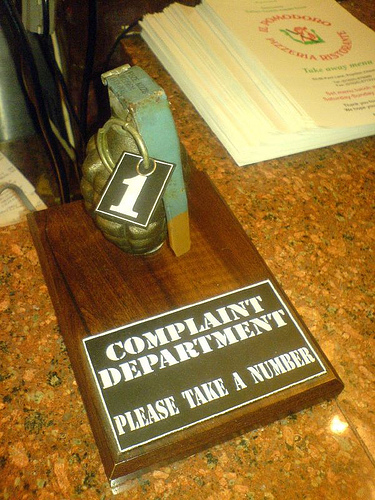There are countless blogs out there that offer a wealth of useful business-related information and news, but after a while, even if the content is good, most of them may start to sound the same. For those looking to trim a little blog fat from their rss feeds, or for those newbies wondering where they should start in the first place, the following list consists of some of the most essential business-related blogs to follow. These are the movers and shakers and trend setters of the business blogosphere and by extension, the business world.
These ten sites will help business owners stay in the loop while providing an in-depth round-up of various topics including: business news, trends, marketing techniques, seo and social networking, technology and business blogging.
Small Business Trends. Small Business Trends is an award-wining, top-ranked website offering an extensive collection of small business news, trends, tips and resources, provided by its network of business experts and moderated by founder and editor in chief, Anita Campbell. The blog is only one part of the business media and information company under the same name. Also deserving attention is the Small Business Trends Radio show as well as BizSugar, a business news and information aggregater.
Seth Godin. Marketing expert, self-made icon, and the author of several acclaimed books, Seth Godin coined the term “permission marketing”- the idea that marketers get the consumer’s active willingness to the participate in the purchasing process by offering a remarkable product, service, or idea and conducting marketing initiatives in a respectful way. His blog offers many insightful posts; it promises to change the way you think about selling and marketing.
Chris Brogan. Like Seth Godin, Chris Brogan has established himself as a social media icon and thought leader. Trust Agents, the book he co-authored with Julien Smith, became a New York Times bestseller two days after its release in 2009, and is considered a “classic” read in social media marketing. Brogan is the president of online business communications company, New Marketing Labs and runs a slew of other sites and programs in addition to his high-ranking flagship site, chrisbrogan.com.
Small Biz Survival. This rural small town business blog, is owned and operated by Becky McCray, herself a small town entrepreneur (she owns a local retail liquor store and a cattle ranch). This blog is a must-read for any small or mid-sized business- especially those that rely on a local customer base. McCray, along with her team of contributors, provide a full plate of home-style practical tips and information to help you run and grow your business and improve your local community.
Copyblogger This blog is by far the best one out there on online copywriting and content marketing techniques, trends, and information. If you are new to the site, be sure to take advantage of the free tutorials and web marketing course that nicely brings together a lot of the older, yet essential published content.
Duct Tape Marketing Marketing consultant John Jantsch offers a practical, systematic approach to small business marketing both online and off. He is the founder of the Duct Tape Marketing System and Duct Tape Marketing Consulting Network that trains and licenses small business marketing consultants around the world. He’s also the best selling author of Duct Tape Marketing and The Referral Engine.
Problogger. Full time blogger Darren Rose makes a living through blogging and with his site he offers to help you do the same. Problogger has many informative posts and supports an online community of bloggers. This site is a must read for those who looking to extend the reach and monetary return of their blogs.
The Consumerist. If you want to stay in touch with consumer sentiment and trends, then keep your eye on The Consumerist. This site hosts a consumer affairs blog owned by Consumers Union. It features posts by the editors Meghann Marco and Ben Popken, along with submissions from regular daily contributors and reader-submitted tips and complaints.
Techcrunch. Techcrunch is one of the premiere online sources of tech news with a focus on technology start-ups in the Web 2.0 sector. The site also provides product reviews and company profiles. At the time of writing, TechCrunch and its network of websites attract over 10 million unique visitors and draw more than 33 million page views per month.
Mashable. Mashable is another must read for any business owner or entrepreneur involved in social media. It is a popular hub for news in social and digital media, technology and web culture. It also offers up-to-date web tips and tricks. At the time of writing, Mashable boasts over 40 million monthly pageviews.



























